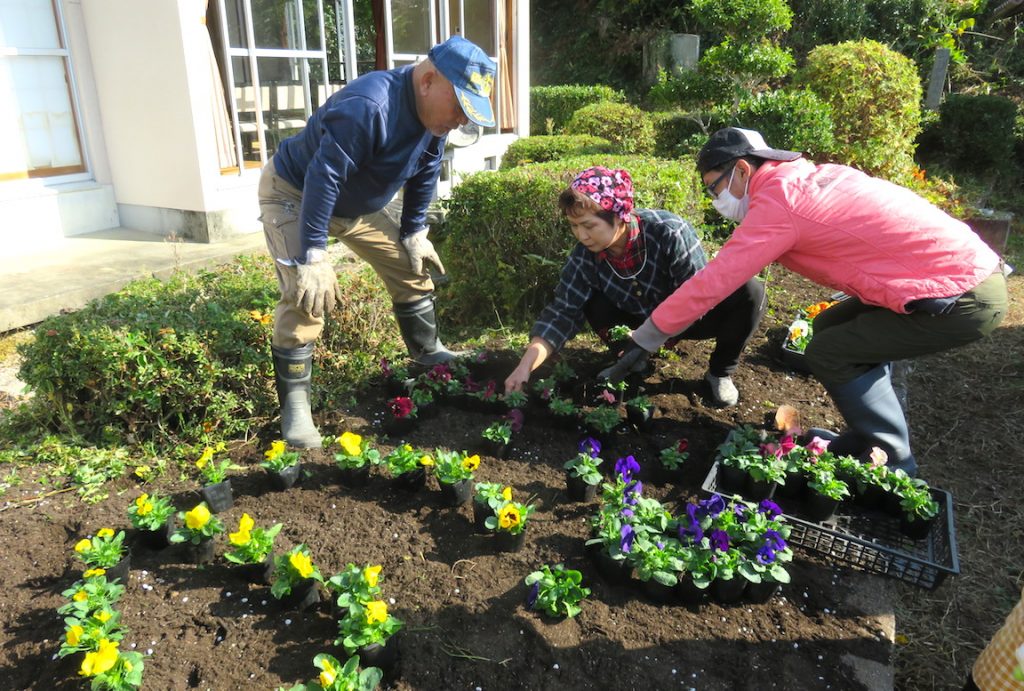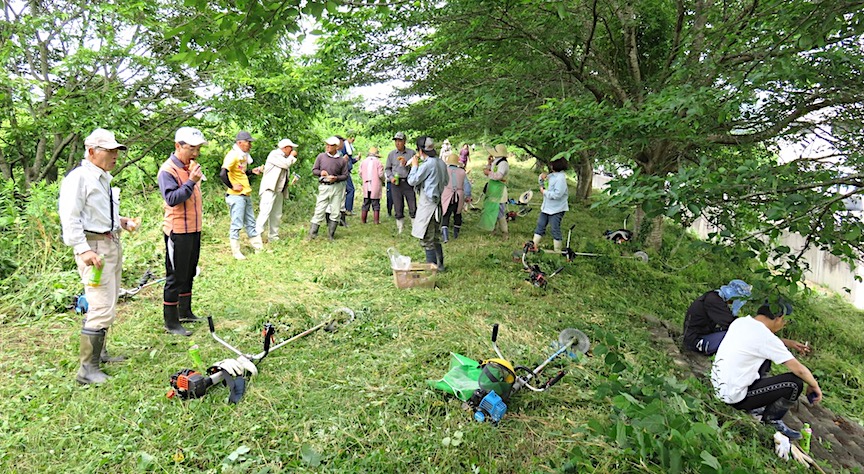
I noticed right away how totally different Japanese kids are from what I was familiar with in the West. For starters, while middle class moms in the U.S. cart their children in SUVs to school then back home, early in the morning and late in the afternoon, hundreds of uniformed students flood the streets on bicycles here. Weather makes no difference. Sunshine or rain or snow, they’re out en masse. It’s an impressive sight!

During the stretch of my first major stay in Japan, I taught English for a year at all levels, from youngsters to adults over eighty. My two youngest students were four. Both of them were, by the way, absolutely brilliant. I also had other kids from six years of age up through high school. Three of my high school seniors were doing their last bit of cramming before entering college the following year. One went on to attend University of Winnipeg, majoring in International Development and Conflict Resolutions.
There are a hundred ways I could write about the kids here. But I’m going to focus on only elementary school students and one very particular aspect of their education, because it so perfectly illustrates the overall relationship between students and their schools, their teachers, adults and other authority figures, their communities, and most important of all, to one another. It is extremely revealing why Japanese are so obsessively considerate of others and so community-minded, later in life. It also is illustrative of the extremely high dietary standards and nutritional awareness of Japanese society.
We’ll be looking at the preparation of food and participation by students in typical schools here in Hyogo Prefecture. My wife Masumi is a music teacher for an elementary school in Inagawa, and turned me on to what you’re about to watch. Yes, she has confirmed: This is exactly what’s it’s like for young folks attending school across all of Japan. Here we go!
Now I don’t know if fresh meals, made from scratch, are common in America. I’m decades beyond any first-hand knowledge of what goes on there. All I know is that for the 12 years I attended Catholic and public schools, I carried my lunch to school from home, meaning over 2,400 times, I ate a nutritionally-questionable peanut-butter-and-jelly or bologna sandwich and a box of Sun-Made Raisins out of a paper sack, accompanied on special occasions with an apple or banana. Hopefully, things have improved.
By the way, ‘itadakimasu’ [頂きます= ‘let’s eat’] and ‘gochisousamadeshita’ [ごちそうさまでした = ‘thank you for the meal’] is what Masumi and I say before and after every meal.
I love this next video!
Notice the extensive use of masks and this was six years ago, pre-coronavirus. Japanese are very vigilant about hygiene and preventing contamination. Drooling, dribbling, sneezing, or in any way oozing into shared food is highly frowned upon.
The comments for these videos on YouTube are inspiring and thought-provoking. They point to a lot of the things I myself find truly remarkable about the participation and general attitude of the kids. Again, Masumi validated what you see. For example, cleaning the classrooms is a DAILY ritual. The students even do bathroom duty. Masumi told me that there are a few kids in her school who aren’t very academically gifted, or simply don’t particularly like the formal schoolwork, but they LOVE all the extra work duties. It makes them feel like they are part of something, making a contribution, accepted and appreciated by their peers. By helping with the upkeep, the students feel they have a stake in keeping the school clean and functional. They learn respect for property, how to work cooperatively for the good of all, the value of being a member of a team, and develop a sense of duty and responsibility. I suspect they feel that the school is in some sense “theirs”, not just some government building.
Anyone reading this who lives in the U.S. will have to help me out here. I frankly can’t imagine kids there, maybe less so the parents, going along with this. I can imagine heated complaints to the board of education: “I’m not sending my kid to school to wait on tables or become a janitor. What’s going on here?” Maybe I’m wrong and things have changed dramatically since I left. I’d love to know what you folks think of all of what you’ve seen here and how it compares to things back there in the homeland.
What I do know is what I’ve shared in other similar essays about Japan in my new book, LIVE FROM JAPAN! and on this website. And that is, Japan has practically no crime, the people are so honest here I still find it difficult to process, the young folks are friendly and polite — I’m constantly bombarded with greetings and smiles when I ride my bike and pass them in the street either playing or coming from school — and this is by far the safest, most civilized country I’ve ever been in. I can’t help but believe all of this starts right there in those classrooms, where beyond formal education there’s much thoughtful attention devoted to forming good character, developing respect for property, learning to work with others, and always giving your best to whatever you do — even wiping floors.
[ If you like this article and others like it here at this site, please check out my full-color book LIVE FROM JAPAN!, available both in print and as an ebook. With over 450 photos, and 63 anecdotes, it’s getting excellent ratings and reviews. The EPUB ebook available from Apple, B&N and many other booksellers, and of course the deluxe print version, all look fantastic. But the Kindle version from Amazon isn’t so great (they did a very bad job rendering the photos). Amazon really compromised the quality of this beautiful book, so I’m just giving you fair warning. Enjoy! Please leave a review.
And one last thing: If you’re really broke and can’t afford to buy this book, I’ve never turned anyone away. I can send you a PDF and you can send me a smile. ]

























Life In Japan: Kawashima Highway Oasis
There’s a whole chapter in my book, LIVE FROM JAPAN!, devoted to Japan’s highway service areas. For anyone who hasn’t seen it, these are the equivalent to what we in the U.S. call ‘rest areas’. They provide a place during a long drive on a highway to pull off the road, stop, stretch your legs, go to the restroom, and for those which have the facilities, to buy some snacks and refreshments.
While functionally they are the same, Japan takes this convenience to a whole different level. Many highway service areas here are mini-malls! I have examples in my book of some typical ones to illustrate how elaborate and well-equipped they usually are.
Having said that, this past weekend my wife and I stopped at one on our way to camping in the Japanese Alps, which was really over the top!
Of course, it had the usual amenities: a restaurant, food court, fast food and ice cream stands, a souvenir shop, vending machines, beautiful clean restrooms.
However, on the inside court it was a spectacularly different story. Inside there was a small but adequate water playground!
This was not a paid admissions theme park. It was free and provided fountains and pools for the whole family to splash around and enjoy. Since this entire summer has been a real scorcher, I can’t overstate how welcome this surprise feature was for everyone stopping by this aptly named ‘highway oasis’.
What can I say? Japan goes out of its way to make life a pleasant adventure for everyone. Too bad this highway service area is not next to my house. Or I could be splashing around in the fountains every day to keep cool!